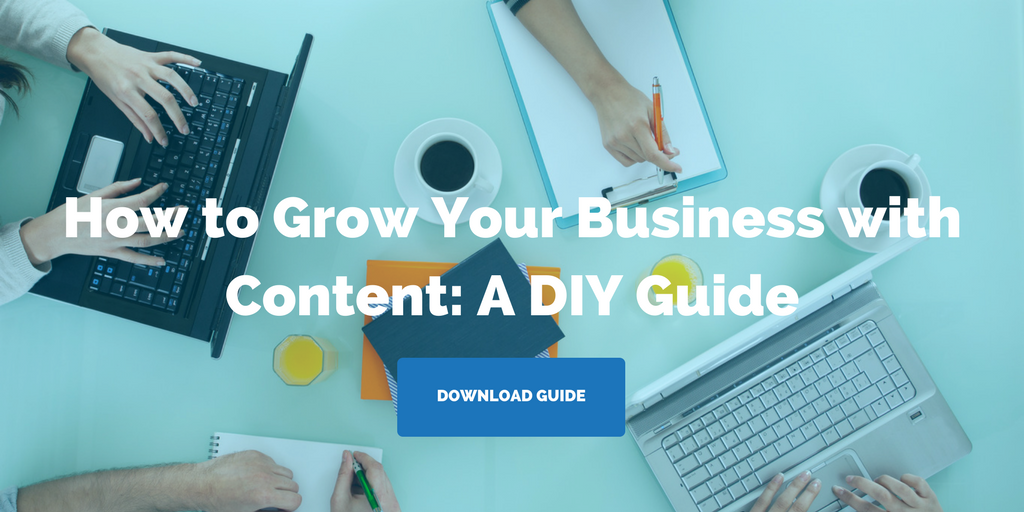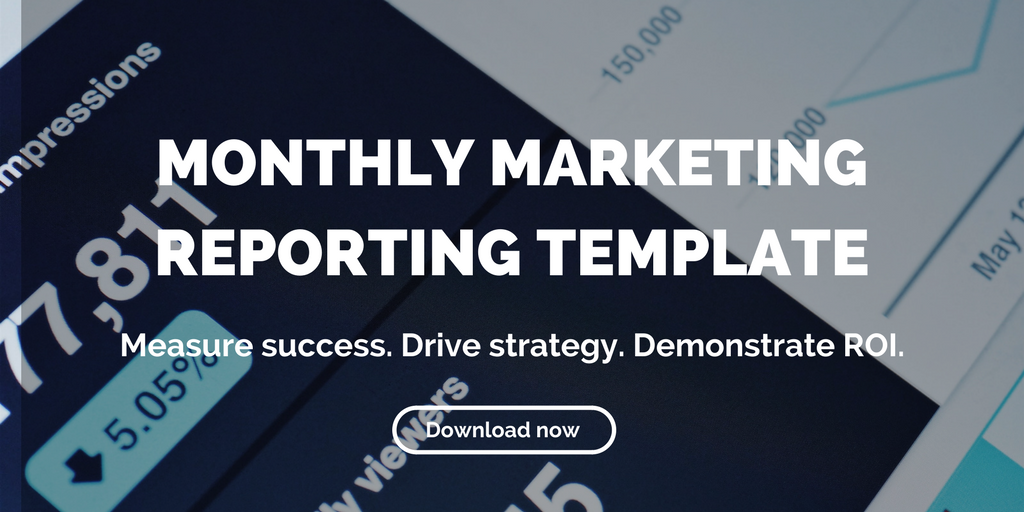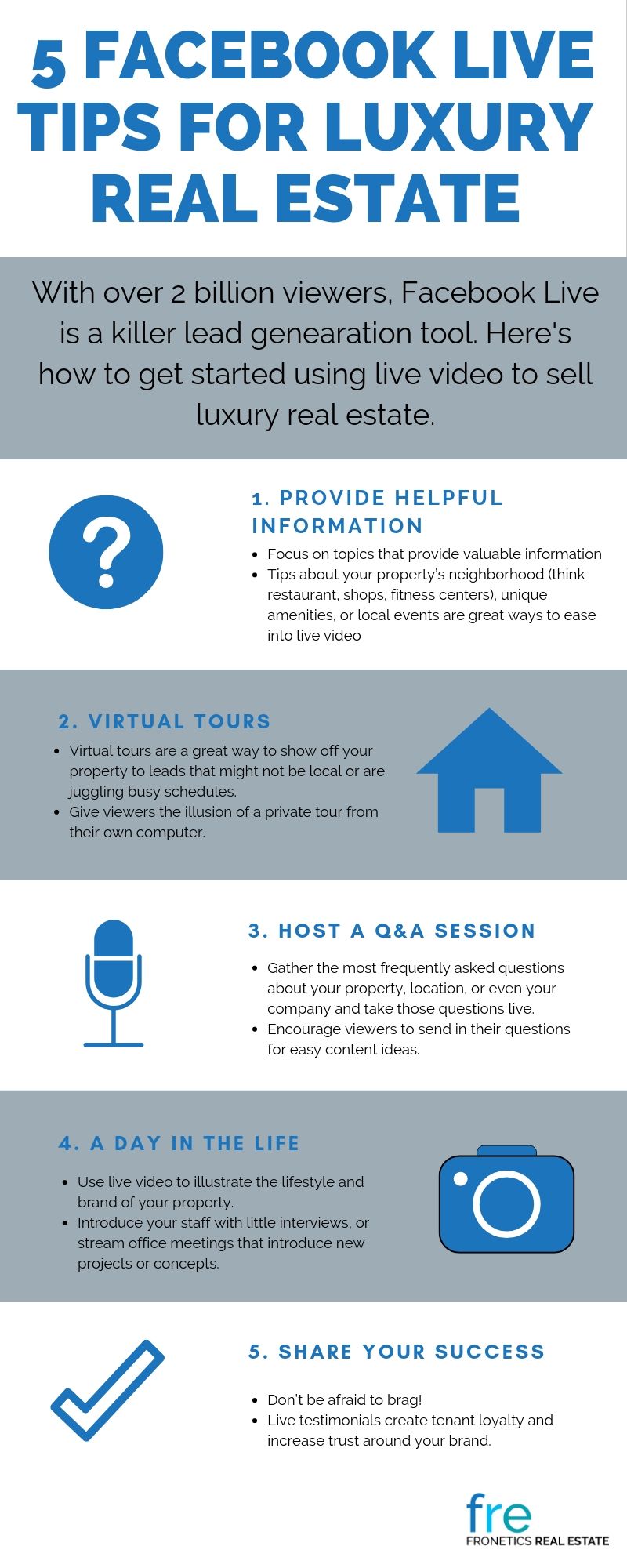Archive for the "Content Marketing" Category

The Sweet Spot of Advertising: Microtargeting and Real Estate
With microtargeting, you can personalize the messaging to ensure it reaches the right audience, in the right place, at the right time.
In an age when customers are increasingly empowered to select how, when, and where to view content, deluging them with off-target ads that do not meet their needs is a waste of effort. Cue microtargeting. With microtargeting, you can personalize the messaging and ensure it reaches just the right audience.
What is microtargeting?
Also known as micro-niche targeting, microtargeting is a marketing technique that relies on consumer data and demographics to identify the interests of specific people. That information is then used to influence their actions and spur their interest in a company’s products or services. The primary goal is to understand the target audience and deliver marketing messages to them through their preferred communication channels.
Real estate and microtargeting
By using collated data, microtargeting helps real estate firms get the right message, in front of the right audience, at the right time. For example, when advertising a property, the right audience would not be high school students, so targeting them is a waste of time. With microtargeting, real estate firms can segment their potential customers based on, for example, age, income range, and family size. Who can afford your property? Does it appeal to empty nesters, families, or young professionals? Now, you can decide who you should target and deliver a personalized, valuable message based on what you know about your customer base.
Microtargeting with geolocation and geo-fencing
Another feature of micro-targeting is the ability to share the right message — in the right place: geomarketing. A marketing strategy built on geomarketing draws on geographic information for successful delivery. Combined with other market segments, it can effectively help you reach the audience that matters to your business. There are two types of geomarketing:
- Geolocation is data about device location. A device´s location is captured by an IP address, GPS, Bluetooth, and Wi-Fi. Geolocation marketing reaches its full potential when paired with consumer behavior. This way, real estate firms can tailor messages to people in a particular location based on their preferences. For example, data collected may show people from a specific area prefer certain types of buildings. Armed with this information, you can design a geolocation campaign that appeals to and reaches those same people.
- Geofencing is dependent on a person’s mobility — like stepping into a new area. Unlike geolocation, geofencing lets you fire a message when a new person crosses a predefined, virtual perimeter. Geofencing helps real estate firms send a “right here, right now” message. For example, the ad may announce the presence of a real estate sales center and accompanying offers. Again, you’ve reached a person with potential interest in buying or renting in the area.
In summary, microtargeting ensures you get the most out of your marketing efforts.
Related posts:
- Using Messaging Platforms for Real Estate to Deliver Content
- Good Real Estate Marketing Gets Personal
- Social Media Trends for 2018 Real Estate Marketers Need to Know
Archive for the "Content Marketing" Category

DIY Digital Marketing Strategy for Real Estate in Four Easy Steps
Looking to create a DIY digital marketing strategy for your real estate brand? Get started with these four steps.
Highlights:
- A digital marketing strategy is your clear path to targeting, reaching, and engaging with potential buyers.
- You have to know who your ideal buyer or renter is before you can begin crafting content that is informative, educational, and even entertaining to your target audience.
- Let your planning pay off by distributing valuable, effective content that your readers want to see
You know you need to have a digital marketing strategy for your property but getting started can be challenging. Where do you begin? Even the language around digital marketing can be intimidating to newcomers.
A solid digital marketing strategy is the foundation for reaching target buyers (or renters). Before you start writing blogs and making videos, you need to set goals. A digital marketing strategy is your clear path to targeting, reaching, and engaging with potential buyers.
Here are four steps to creating a successful DIY digital marketing strategy.
Steps to building a DIY digital marketing strategy for real estate
1) Who is your buyer?
Trying to write interesting and engaging content for an unidentified audience is nearly impossible. You have to know who your ideal buyer or renter is before you can begin crafting content that is informative, educational, and even entertaining to your target audience. First of all, nail down the details about your buyer personas to make that personal connection: What are their interests? Where do they gather information? How much money do they make? What drives their decision–making?
2) What is your goal?
What do you plan to accomplish with your digital marketing efforts? The answer should define your content goals and become a crucial part of your business goals.
Our real estate clients often focus on converting contacts/leads to sales, growing website traffic, and increasing revenue. Include both short and long-term goals and refer back to these goals to make sure you’re sticking to your strategy.
3) Distribute, distribute, distribute
Identified your audience? Check. Defined your goals? Check. Next: select the best platforms for distributing your content to get your property in front of the right potential buyers and tenants.
Social media is a digital playground for marketers but knowing where to post is just as important as knowing what to post. You’ll need to identify what platforms your target buyers are using and how to reach them on those platforms.
4) Get to work
Once you have created your buyer personas, identified your goals, and decided on the best platforms for your target audience, the fun begins: getting your content in front of potential buyers. Let your planning pay off by distributing valuable, effective content that your readers want to see.
Remember to think of your strategy like a body of water, ebbing and flowing. Your digital marketing strategy should be fluid and adjusted as needed. If your property features multiple units, change your messaging to reflect and highlight that variety (for example, a penthouse unit).
Final word of advice: keep up with changing buyer behavior, stay on top of new features on social platforms, and refine your strategy along the way.
Related posts:
- Infographic: Content Marketing Statistics Every Real Estate Marketer Should Know
- How to Use Guest Posting as Part of Your Content Strategy
- 10 Quick Ways to Grow Brand Awareness
Archive for the "Content Marketing" Category

Wellness Amenities are the Biggest Trend in Luxury Real Estate
The latest trend in luxury real estate focuses on peace and tranquility. Here’s why wellness amenities, like meditation gardens and yoga decks, are growing in popularity.
Highlights:
- Modern luxury residents are trending away from the traditional flashy displays of wealth, and toward the peace and tranquility of wellness amenities.
- Luxury condo residents are just as likely to look for meditation gardens and yoga studios as gyms and on-site spas.
- Lush plantings, meditation studios, and sky-lit seating areas attract residents and require very little maintenance because of their simple, inherent beauty.
When most people think about luxury real estate, extravagance comes to mind: car elevators, helicopter pads, two-story gyms, and fine–dining restaurants inside glassy residential towers. However, modern luxury residents are trending in a different direction, away from the traditional flashy displays of wealth, and toward the peace and tranquility of wellness amenities.
The Rise of Luxury Wellness Amenities
Personal wellness is a cultural trend on the rise. Now, that focus on the soul-body-mind connection has also reached luxury residential communities across both the United States and the globe. While private theaters and state–of–the–art lobbies are still a big part of the equation, we are seeing increased demand for amenities that promote tranquility.
These days, luxury condo residents are just as likely to look for meditation gardens and yoga studios as gyms and on-site spas. They treat peace of mind as a precious commodity — and luxury residential communities have been racing to adapt to the change.
Some of the biggest names in luxury real estate are leading the way:
Providing Tranquility and Communion with Nature
In Hallandale Beach, Fla., 2000 Ocean has created a tranquility garden where residents can take a walk or relax in their very own lemon tree grove. At 1030 Kings in West Hollywood, an outdoor yoga deck has been constructed to offer a breathtaking place to breathe and unwind. And, in New York City, One Manhattan Square recently opened one of the largest private parks in the city, reserved exclusively for residents and their guests.
Using the Space You Have to Create Luxury Wellness
An interesting aspect of this new trend is that buildings don’t necessarily need access to large outdoor areas. You may not have an expansive courtyard or an open lot nearby to transform into a tranquility park. Or, perhaps, your outdoor areas are already dedicated to family-friendly amenities like a dog park or playground. The good news is you can use existing space to include wellness amenities — although not every community has the resources to go as far as Gramercy Square in Manhattan.
Gramercy Square has forgone the idea of the open-air retreat and built an 18,000-square-foot subterranean amenities club with a sky-lit pool, yoga room, and studio staffed by reps from a Manhattan meditation center. Other high-rise luxury buildings are using their upper floors and roof access to provide outdoor serenity, including features such as private, sunlit spas and planter gardens.
Luxury Real Estate and Wellness Amenities
If you are developing or managing a luxury condo building, this trend cannot be ignored. Not only are today’s luxury residents clamoring to live in buildings that provide wellness amenities, but these amenities often come with very reasonable overhead. Lush plantings, meditation studios, and sky-lit seating areas attract residents and require very little maintenance because of their simple, inherent beauty.
Are you raising awareness around your wellness amenities? If not, let us help.
Related posts:
- Using Content Marketing to Market and Sell Luxury Real Estate
- The Role of Social Media in Luxury Real Estate Marketing
- 5 Luxury Real Estate Brands that Use Content Marketing to Sell Property
Archive for the "Content Marketing" Category

Infographic: 5 Tips for Using Facebook Live for Real Estate Brands
Live video marketing is one of the best and most cost-effective ways to grow brand awareness and generate leads. Here are five tips for using Facebook Live as part of your video marketing strategy.
Highlights:
- Facebook Live’s average daily views doubled year-over-year with over 2 billion users.
- Virtual tours on Facebook Live are a great way to show off your property to leads that might not be local or are juggling busy schedules.
- A live testimonial provides an opportunity for clients to talk about your property, creating customer loyalty and increased brand trust.
As a real estate marketer, you’re well aware of the popularity of video this year. Video is everywhere and the trend isn’t slowing down. Fifty-four percent of consumers actually want to see more video content from brands.
So while more real estate brands are increasing use of video in their digital marketing strategy, some are still hesitant to use live video options, like Facebook Live. I get it, going live is scary. With other video options, you can easily delete and start over. Live video gives you one shot to get it right. And not everyone will join your video when you start, so it’s key to iterate your main points several times without sounding redundant.
But don’t let your nerves stand in the way of trying Facebook Live. Initially launched in 2015, the live video streaming platform has soared in popularity by giving viewers an up-close and personal look at real estate brands. In just two years, Facebook Live’s average daily views doubled year-over-year with over 2 billion users and those who watch videos will spend three times as much time on a Live video than a produced one.
It’s easy to see with numbers like that how Facebook Live can help grow brand awareness and start generating leads. Here are 5 tips to get you using Facebook Live for your real estate brand.
Infographic: 5 tips for using Facebook Live for real estate brands
-
Provide helpful information
We talk a lot about the importance of high quality, valuable content and the same holds true for live video. Try to focus on topics that will provide valuable information for your viewers. Tips about your property’s neighborhood (think restaurant, shops, fitness centers), unique amenities, and local events let you ease into live video by covering topics that you’re comfortable with and knowledgeable about. And viewers will find them useful, too.
-
Virtual tours
They say a picture speaks a thousand words, so imagine what live video can do! Don’t just talk about the key features of your property — show your viewers. Virtual tours on Facebook Live are a great way to show off your property to leads that might not be local or are juggling busy schedules. Seeing your property in real time will give viewers the illusion of a private tour from their own computer.
-
Host a Q&A
Hosting a question and answer session is one of the easiest ways to get your feet wet with live video. Think about the most frequently asked questions about your property, your location, even your real estate brand and take those questions to Facebook Live. Don’t be afraid to start a Q&A–series where you address questions on a regular basis. Encourage viewers to send in their questions for easy content ideas.
-
Day in the life
Use live video to show the human side of your real estate brand. Introduce your staff with little interviews and stream office meetings that introduce new projects or concepts. This inside look shows who you are and what your brand stands for, which helps build trust in your company and your properties.
-
Tell your success stories
People love a good success story and if a recent buyer (or leasee) is willing to go on camera to rave about your property, you should jump at the opportunity. As a marketer, you know that customer testimonials serve to increase trust, so why not showcase your satisfied clients? A live testimonial provides an opportunity for clients to talk about your property, creating customer loyalty, and increased brand trust.
Final thoughts
Live video is an ideal way to establish your credentials and generate leads. With Facebook Live, real estate brands ca boost brand awareness, build trust, and increase engagement. Use these tips to make live video work for you. Need help getting started? You know where to find us.
Related posts:
- 3 Ways to Boost Your Real Estate Marketing with Video
- Infographic: Best Video Distribution Channels for Real Estate Marketing
- 6 Simple Tools for Creating Animated Real Estate Marketing Videos
Archive for the "Content Marketing" Category

How to Increase Leads with Chatbots
Real estate brands are all too familiar with the challenges of generating leads. Here’s how chatbots can help by improving user experience and engagement.
Highlights:
- Within one day of adding a chatbot to our website, we had a meeting set up with a prospect. That was in the first 24 hours.
- Using a chatbot for your properties means that your real estate brand is working even when you aren’t.
- Conversational chatbots help build trust in your real estate brand while creating a positive customer experience.
We have talked a lot about the popularity of chatbots and how to implement them into your digital marketing strategy. But beyond the initial set up, have you really squeezed the juice out of this automated tool to help increase leads?
We decided to dive into the chatbot pool and our firm’s results speak for themselves. Within one day of adding a chatbot to our website, we had a meeting set up with a prospect. That was in the first 24 hours. This prospect turned out to be our next client and the initial connection was all made through the chatbot.
Lead generation with conversation
Buying or leasing a property is a huge decision, one which usually involves a range of emotions. One of the best ways to connect with potential buyers is through a thoughtful and informative customer experience.
Chatbots can help bridge the gap between your brand and potential buyers. Conversational chatbots help build trust in your real estate brand while creating a positive customer experience. They typically handle conversations with clients that are at the top of the funnel — generally people you don’t know and who might be unsure of whether they are actually going to buy/sell the property.
An article in The Startup on chatbots for real estate concludes they bring many benefits:
“The bot can be programmed on tasks like collecting basic information in the form of asking relevant questions and generating relevant answers resulting in an e-mail capture. Additionally, the chatbot can even transfer the conversation to a human agent, if need be.”
Other lead generating opportunities with chatbots
Real time answers 24/7
Questions about your new property or specific amenities? These are questions that chatbots can immediately answer. Don’t leave prospects waiting for you to return their email or form submission. Bots can answer questions about your property instantly.
The other benefit of using chatbots? They don’t need sleep! Real estate questions don’t always arrive at convenient times. Using a chatbot for your properties means that your real estate brand is working even when you aren’t. Prospects can get their questions answered 24 hours a day, seven days a week.
Virtual tours
Nurture prospects with catchy images of your property and amenities. With the click of a button, your chatbot can offer prospects a virtual tour of your property without ever leaving the page. The impact: prospects leave the chat armed with informative and helpful information about your real estate brand.
Tracking
Most chatbots automatically log interactions with leads that engage with your bot. Once you’re ready to engage with prospects, you can easily access past interactions to know where the prospect is in the sales funnel, as well as key preferences they may have expressed in earlier conversations.
Follow up
Real estate brands are constantly juggling marketing tasks. Use chatbots to help alleviate your workload with follow–up automation. Users can identify how they want to be contacted or specific questions they need answered, taking the guess work out of the follow up process.
Real estate brands need to experiment with chatbots for the ease and convenience of automation, along with the positive audience experience. But to get the most out of your chatbot make sure you’re tracking your success and tweaking interactions along the way.
Need help setting up your chatbot? We’re here to help.
Related posts:
- Using Messaging Platforms for Real Estate to Deliver Content
- Good Real Estate Marketing Gets Personal
- Social Media Trends for 2018 Real Estate Marketers Need to Know
Archive for the "Content Marketing" Category

Push Notifications: Why Real Estate Marketers Need to Start Using Them
Push notifications can help accelerate your digital marketing efforts so that your property gets in front of prospective buyers and renters faster than would happen organically.
Highlights:
- Using push notifications can get your message in front of prospects instantly.
- Websites are now capable of leveraging this technology. Push notifications are delivered to a mobile device or desktop even if the user isn’t on that website.
- Be aware: overly pushy or too frequent notifications can increase user opt-out numbers.
“If you build it, and they will come.” Kevin Costner’s legendary line in “Field of Dreams” could also be said about digital marketing. Or rather, publish quality content, and buyers will come to you. But, digital marketing takes time to show results. There’s not much you can do about that.
Or, is there?
Using push notifications can get your message in front of prospects instantly. Pair quality content with a comprehensive digital marketing strategy, and you will be in a position to drive more traffic to your website, create more brand visibility, and sell or lease more properties.
Don’t believe in the power of push notifications? Here are some undeniable stats to prove it:
- Push notifications boost engagement up to 88%
- 70% of adults enabled push notifications from their favorite brands
- 65% of users return to an app (or website) within 30 days when push is enabled
- The average click rate for push notifications is 7.8%
- 50% of customers find web browser push notifications useful and readily give their permission to the website that they would like to hear from
So, what is a push notification?
A push notification is the delivery of information to a device from a server where the request for the transaction is initiated by the server rather than by an explicit request from the client. What does it all mean? It’s basically a fancy way of saying you can push content to audiences on their phone (or computer), even when they’re not using the device, but there is a caveat — viewers have to opt into these notifications in order to receive them.
And don’t worry if your real estate marketing strategy doesn’t include an app. Websites are now capable of leveraging this technology, called browser push notifications. These types of notifications are delivered to a mobile device or desktop even if the user isn’t on that website. And since Americans look at their phones 52 times a day on average, it gives you a lot of opportunity to get your property in front of them.
Don’t be pushy
Beware of overly pushy or too frequent notifications, which can increase user opt-out numbers. And refrain from using push notifications as a sales pitch. Rather than forcing your properties on users, be the expert advice they are seeking. Help them envision themselves in one of your properties.
According to PushAssist, “sending multiple push notifications can enhance your page views, but won’t boost your sales. It could also result in high bounce rates. Moreover, this may annoy your users and even worse may reduce interest in the products and services you offer.”
Don’t fall into the habit of the “spray and pray” approach when it comes to push notifications. Thoughtlessly bombarding users with generic messaging will not attract quality leads. Instead, be thoughtful and deliberate with your communication. Offer your prospects valuable messaging with a personal touch to encourage action.
If you can successfully navigate push notifications with sharp messaging and timing, your real estate brand can greatly benefit from this digital lead generation tool.
3 benefits of push notifications
1. Increased user engagement
When used wisely as a part of your digital marketing strategy, push notifications can increase user engagement. But remember, it’s quality over quantity. Your notifications should be direct and to the point. They should address the needs of your prospects and encourage open communication. Using push notifications to encourage users to interact with your real estate company helps drive brand awareness and lead generation for your properties.
2. Drive action
Push notifications are an effective way to create a sense of urgency around your property. This urgency, in turn, drives website traffic and increases conversion rates. Try sending messages with an undertone of “act now” on topics such as the latest amenities that buyers can’t live without, local restaurants and activities, and updates on high-demand buying and leasing opportunities.
3. Time efficiency
Let’s face it, writing emails and blog posts is time consuming. Marketers know how much time it takes to research topics and keywords, write the actual copy, and edit, proof-read, and distribute. With push notifications, marketers can quickly and efficiently create messaging that instantly arrives on a user’s phone or desktop, saving hours every week on creating content that may or may not even reach your readers. And since users must opt into push notifications, you have prospects that are genuinely interested in your properties.
Is your real estate brand already using push notifications? Have you seen an increase in web traffic or conversions? We’d love to hear about your experience.
Related posts:





